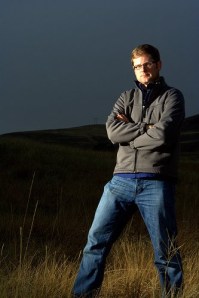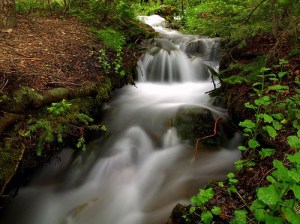ISO in a Nutshell.
Have you ever wondered what ISO is? Well, after reading this post you should have a pretty good idea of how it works.
ISO has been around for a long time. It is a abreviation for International Standards Organization. In the old film days it meant the same thing as ASA. ISO traditionally measures film speed. The higher the number, the more sensitive the film was to light. So, ISO 400 is a more sensitive film than ISO 100. Since you are probably not using film anymore,ISO is now how a reference to how sensitive your cameras light sensor is to light. Most cameras have several ISO setting ranging from 100 to 1600.
Most of the time lower ISO’s are most desirable because they give you less noise in your photograph. However, choosing a higher ISO allows to you to use a smaller aperture or a faster shutter speed. There are times when a higher ISO setting is useful. If you are shooting in low light or if you are shooting action shots you might want to raise your ISO settings. Also, If you are using a really long lens, such as a 500mm, it might be wise to raise your ISO setting to help avoid camera shake.
If this is new to you it might be a good idea to do some tests. Go out and shoot the same scene in all of the ISO setting your camera offers. This way you can get a feeling for what the different ISO settings produce.
The Three Lenses Every Photographer Should Own.
1. 18-50mm zoom
This is the basic kit lens on your camera. If you have an aps-c camera this lens will be equivalent to a 24-70mm 35mm format lens. It zooms from fairly wide, which is good for landscapes to will also be able to zoom for closer shots. This lens is a great all around lens to keep on your camera when you don’t know what you will be shooting.

2. 50mm f1.8 macro
This lens will allow you to get close up shots with your camera. It will also allow you to create shallow depth of field because of the 1.8 f/stop. If you can’t afford a f1.8, a f2.8 will be just fine. This lens is also great for portraits and for close-ups like flowers. The other nice thing about these lenses is that you can pick them up cheap on ebay.
3. 70-200mm telephoto
This lens will allow you to get up close to your subject. It is great for animal shots and also is a good portrait lens. I also like taking photos of flowers with mine because you get very shallow depth of field. When looking for a telephoto lens try to find a fast one, f2.8 if possible. If you can’t afford a fast one, at least try to find a f4 lens. Oh yeah, almost forgot that this is a great lens to shoot sports since it allow you to get close the the subject.
These lenses will give you versatility to shoot almost any situation you will come up against.
They are also available with almost any camera system available. If you have any questions post a comment and I will answer them, Thanks!
Strobing-This is way cool!!
I was looking for a video on posing and I couldn’t find one that I found satisfactory for this site. So, I am going to make one. I’m not very good at making videos and truthfully a little nervous about it. Anyway, it’s gonna take me a few day. In the meantime, I have a video on strobing that I saw last year. I thought you might like it. Here it is. I have also included a photo of me using this technique. I took the photo about a year ago. Enjoy and let me know if you have any questions.
How to Crop an Image in Photoshop.
Cropping in image can be very important if you plan on printing a photo. What you see in your camera is not what you get when you print a photo. A 5×7 will need a different crop than an 8×10. To help out I have found a video that should be useful.
Digital Photography Glossary
Recently I have had a few questions like “What is Burning”, or “What does ambient light mean?” To solve this problem I have found a glossary of terms that should help you guys understand. This glossary should help so when you are wondering what “buffering” is, you will know.
Critique for H.B.
O.k. I have another brave soul!
Critique for TV
Three things every photographer should have in their bag.
So, I was thinking about my equipment and thinking some more about what to write about. It has been a while since I have done a post and I really am sorry about that. Life gets very busy some times. Hopefully it will slow down soon. Anyway, here is a list of a few items I feel every photographer should have.
1. Tripod
This is a necessity for every photographer. If you are at all serious about photography, get a good tripod. I have a bogen tripod that I got in 1990. It has been a life saver. If you are photographing landscapes you will want to use a small aperture and this means a slower shutter speed. To avoid blur, use a tripod. If you shoot portraits a tripod is great. You can put your camera on it and then go pose your subject.

2. Polarizer filter
Do you want blue skies and better color in your photographs? Put one of these babies on the front of your lens and you will almost always get better shots! Make sure you get a circular polarizer if you use an auto focus lens.

3. Neutral Density Filter
For the landscape photographer a neutral density filter is a must! You might want to get a split neutral density filter also. You ask what is a neutral density filter. Simply , it is a filter that blocks light coming into you lens. This allows you to use longer shutter speeds to get shots like this:






Recent Comments